The temperature drop through a two layer furnace wall is 900∘C. Each layer is of equal area of cross section. Which of the following actions will result in lowering temperature θ of the interface ?
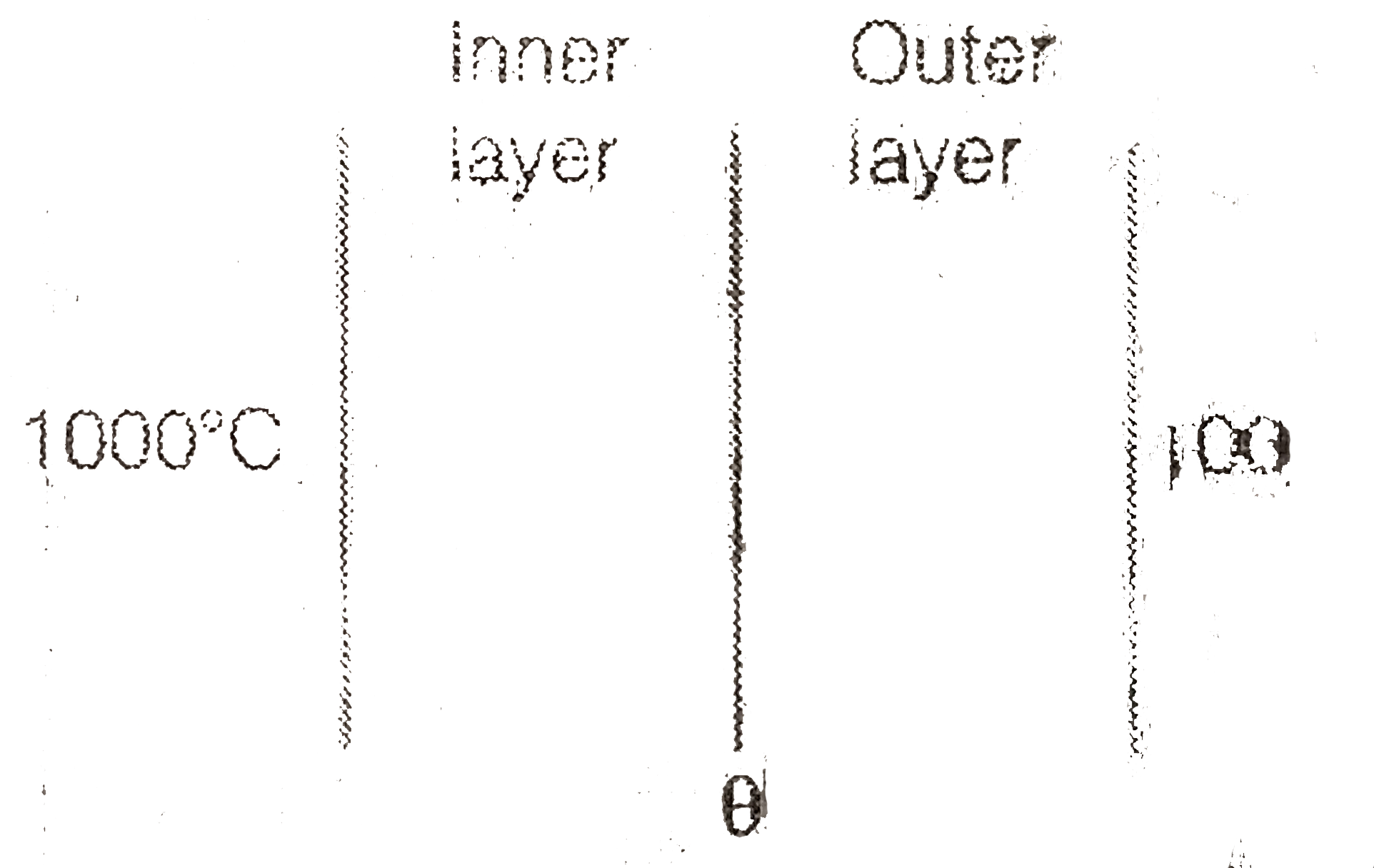
By increasing the thermal conductivity of outer layer.
By increasing the thermal conductivity of inner layer.
By increasing thickness of outer layer.
By increasing thickness of inner layer.
The correct Answer is:A, D
Rate of heat flow KiA(1000−θ)l1=K0A(θ−100)l0⇒θ−100900=11+K0liKil0
Now, we can see that θ can be decrease by increasing thermal conductivity of outer layer (K0) and thickness of inner layer (l1).
Topper's Solved these Questions
- BOOK - ALLENCHAPTER - GEOMETRICAL OPTICSEXERCISE - EXERCISE -0165videos
GEOMETRICAL OPTICS
- BOOK - ALLENCHAPTER - GEOMETRICAL OPTICSEXERCISE - EXERCISE -0282videos
GEOMETRICAL OPTICS
- BOOK - ALLENCHAPTER - GEOMETRICAL OPTICSEXERCISE - subjective14videos
GEOMETRICAL OPTICS
- BOOK - ALLENCHAPTER - CURRENT ELECTRICITYEXERCISE - EX.II66videos
CURRENT ELECTRICITY
- BOOK - ALLENCHAPTER - GRAVITATIONEXERCISE - EXERCISE 49videos
GRAVITATION
Similar Questions
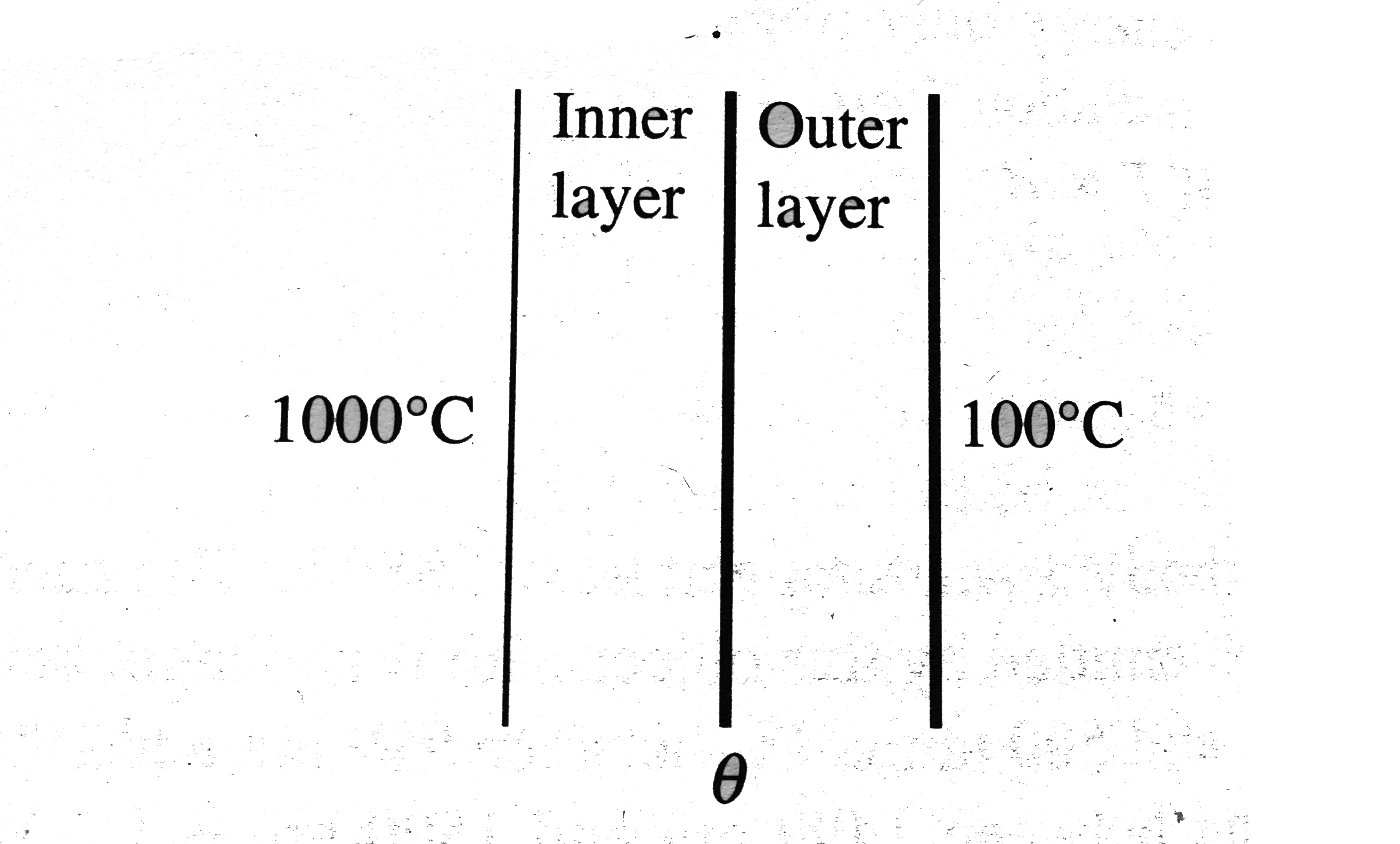
The temperature drop through a two layer furnace wall is 900∘C. Each layer is of equal area of cross section. Which of the following actions will result in lowering the temperature θ of the interface?View SolutionFind the temperature of junction at B, if each rod has equal area of cross-section.
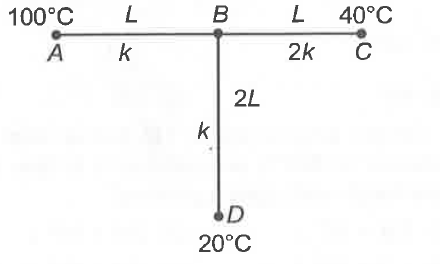 View Solution
View Solution
Knowledge Check
- Question 1 - Select One
Which of the following reactions takes place at higher temperature range (900 K-1500 K) in blast furnace ?
A3Fe2O3+CO→2Fe3O4+CO2BFeO+CO→Fe+CO2CFe3O4+4CO→2Fe+4CO2DFe2O3+CO→2FeO+CO2
When a sample of hard water is passed through the layer of sodium zeolite resulting which of the following ions will not be present in the resulting sample of water obtained?
View SolutionFigure shows a large tank of water at a constant temperature θ0 and a small vessel containing a mass m of water at an initial temperature θ1(<θ0). A metal rod of length L, area of cross section A and thermal conductivity K connects the two vessels. Find the time taken for the temperature of the water in the smaller vessel to become θ2(θ1<θ2<θ0) . Specific heat capacity of water is s and all other heat capacities are negligible.
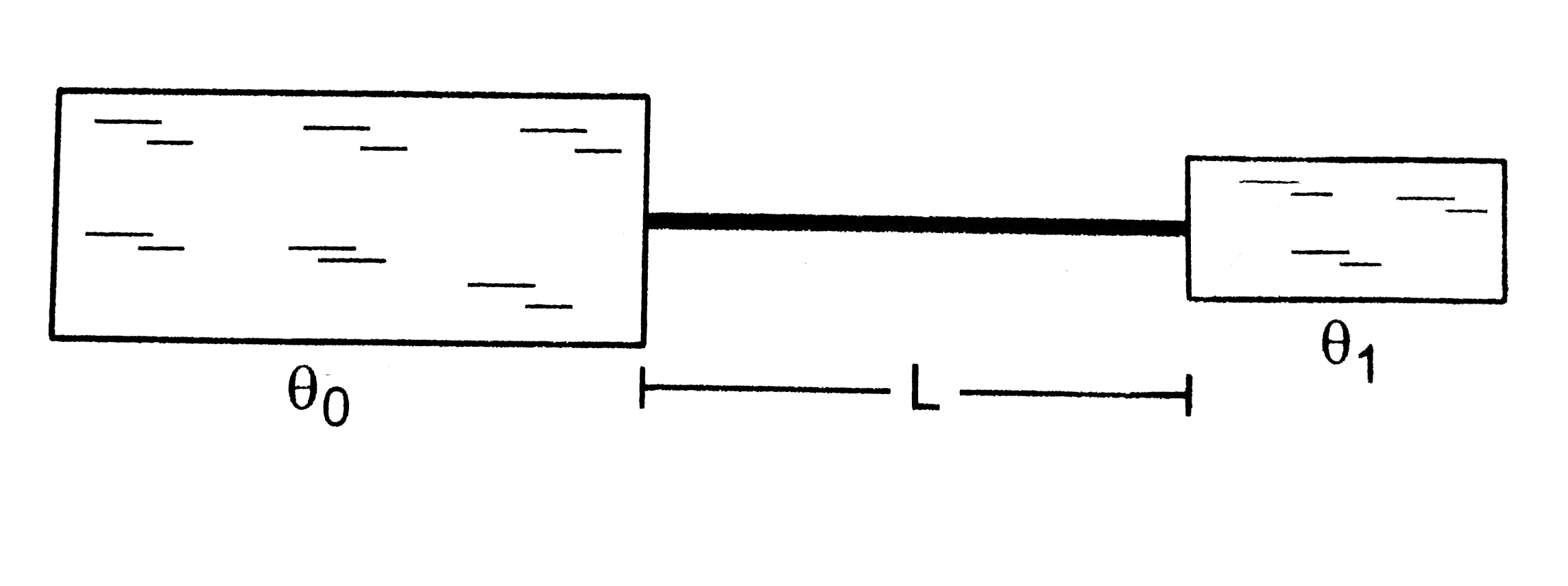 View Solution
View SolutionTwo parallel plates A and B are joined together to form a compound plate . The thicknesses of the plate are 4.0cm and 2.5cm respectively and the area of cross section is 100cm2 for each plate. The thermal conductivities are KA=200Wm−1C−1 for plate A and KB=400Wm−1C−1 for the plate B. The outer surface of the plate A is maintained at100∘C and the outer surface of the plate B is maintained at 0∘C. Find (a) the rate of heat flow through any cross section, (b) the temperature at the interface and (c) the equivalent thermal conductivity of the compound plate.
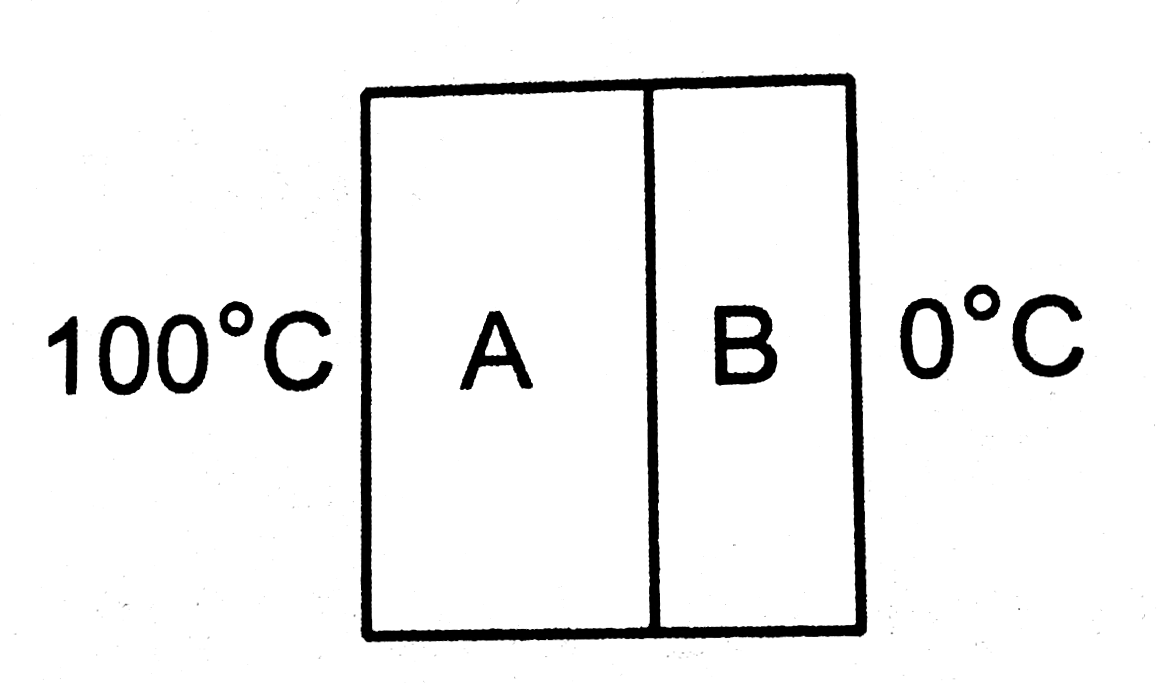 View Solution
View SolutionTemperature of hot end and cold end of a rod, which is in steady state are 100∘C and 40∘C respectively. The area of cross section of rod and its thermal conductivity are uniform. The temperature of rod at its mid point is (Assume no heat loss thorugh lateral surface)
View SolutionThe volume V of a liquid crossing through a tube is related to the area of cross-section A, velocity v and time t as VαAavbtc which of the following is correct ( given a≠1 )
View SolutionA closed cubical box is made of perfectly insulating material and the only way for heat to enter or leave the box is through two solid cylindrical metal plugs, each of cross sectional area 12cm2 and length 8cm fixed in the opposite walls of the box. The outer surface of one plug is kept at a temperature of 100∘C . while the outer surface of the plug is maintained at a temperature of 4∘C . The thermal conductivity of the material of the plug is 2.0Wm−1C−1 . A source of energy generating 13W is enclosed inside the box. Find the equilibrium temperature of the inner surface of the box assuming that it is the same at all points on the inner surface.
View Solutionshows a cylindrical tube of cross-sectional area A fitted with two frictionless pistons. The pistons are connected to each other by a metallic wire. Initially, the temperature of the gas is T0and its pressure is p0which equals the atmospheric pressure, (a)What is the tention in the wire?(b)What will be the tention if the temperature is increased to 2T_(0)?
 View Solution
View Solution

